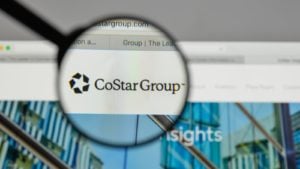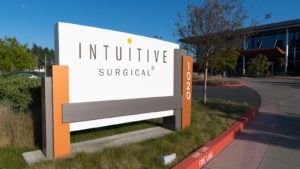
10 Stocks With Little or No Debt to Own for the Next 50 Years
Put these 10 stocks in a drawer for the next half-decade or so
Surf the net and you’ll find lots of stories about the best stocks to own. Some will be for the next year, five years, or even 10 years. Very few, however, will offer up ideas for the next half-century.
In part, that’s because investing today has become a “What have you done for me lately?” kind of business. Also, because so many companies have disappeared over the years, it’s futile to guess who’s going to stick around.
The average S&P 500 company had a tenure of 33 years in 1965. In 1990, that dropped to 20 years. By 2026, it’s forecast to fall to 14 years.
In other words, the odds of you winning the lottery is almost as good as owning a stock that remains publicly traded for 50 consecutive years. Nonetheless, I’ve decided to give myself this challenge.
The 10 stocks to own on my list have very little debt, a market cap greater than $10 billion, and sector-wise provide a reasonably diversified portfolio.
Linde (LIN)

Linde (NYSE:LIN), the UK-based supplier of industrial gases, has a total return of 32.2% year to date through Dec. 4.
In October 2018, Linde and U.S.-based Praxair completed their $90 billion merger of equals that created one the world’s largest supplier of industrial gases with annual revenues of $28 billion and 80,000 employees around the world. The deal vaulted it ahead of Air Liquide (OTCMKTS:AIQUY), the French provider of industrial gases.
In the third quarter ended Sept. 30, Linde had an operating profit of $1 billion on revenue of $7 billion. Despite the $90 billion merger, Linde finished the quarter with just $11.8 billion in short- and long-term debt for a debt-to-equity ratio of 23%. Linde was able to sidestep the debt issue by doing an all-stock deal with Praxair.
Linde shareholders received 1.54 shares in the newly combined company for every share held. Praxair shareholders received one share of the combined company for every share held.
I would expect Linde to deliver double-digit annual returns for years to come.
Lululemon (LULU)

Lululemon (NASDAQ:LULU), the popular apparel brand that got its start making comfortable yoga pants for customers, has a total return of 90.5% year to date.
This isn’t the first time I’ve included LULU stock in a list of long-term holds. In August 2016, I argued that LULU would be one of the 50 best-performing S&P 500 stocks over the next decade. Three years in, it’s living up to the promise.
As Forbes contributor Sergei Klebnikov recently pointed out, Lululemon has benefited from selling directly to its customers through its own network of stores rather than selling its products wholesale to department stores and other third-party retailers.
Between its healthy women’s business, a growing men’s business, an e-commerce segment that’s also rapidly growing, and its Asian stores selling its product like hotcakes, it’s easy to understand why it’s putting the rest of retail to shame.
Hormel (HRL)

Hormel (NYSE:HRL) is a food company focused on protein-based products, including the Hormel, Spam, Dinty Moore and Skippy Brands. Hormel stock isn’t lighting it up in 2019. It’s got a total return of just 6.3% year to date.
While its 2019 return isn’t Lululemon-like, it has delivered consistent returns for its shareholders. Over the past decade, it has generated an annualized total return of 18%.
On Nov. 25, Hormel announced its Q4 2019 report. For the year, Hormel had an operating profit of $1.2 billion from $9.5 billion for an operating margin of 12.6%. Long-term, it expects to grow pre-tax earnings by 5-7% annually.
At the same time it released earnings, Hormel also announced an 11% dividend increase to 93 cents a share. That’s the 54th consecutive year HRL has increased its dividend and the 11th consecutive year it has increased its dividend by 10% or more.
It might not be the most exciting stock to own, but it surely is one of the most consistent.
CoStar Group (CSGP)

If you’re familiar with CoStar Group (NASDAQ:CSGP), you know there’s money to be made with information. Specifically, CoStar makes money by providing the most comprehensive database of real estate information in the country.
By being the best information provider around, CoStar shareholders have done very well in 2019 with a year-to-date total return of almost 75%. Over the past 15 years, CSGP has generated an annualized total return of 18.8%, double the total U.S. market.
Recently, CoStar acquired STR Global, a data analytics company that specializes in hotel information, for $450 million. With only $64 million in annual revenue, CoStar expects to grow STR by 20% annually by helping bring products to the market faster.
As AI, machine learning, and data analytics become a regular part of business, expect CoStar to continue to grow at a considerable rate.
Intuitive Surgical (ISRG)

Intuitive Surgical (NASDAQ:ISRG) manufactures the da Vinci robotic surgical system that allows doctors to carry out minimally invasive surgeries for patients around the world. It’s installed almost 5,000 systems worldwide, with a majority sold to U.S. hospitals. However, the company’s international sales are multiplying.
The systems aren’t cheap. That has allowed it to grow its revenues by 75% in the past four years. This has done wonders for ISRG stock, which has a nearly 22% total return year-to-date and 29.4% over the past 15 years.
If there were a tech/healthcare stock that Berkshire Hathaway (NYSE:BRK.A,NYSE:BRK.B) should have bought but didn’t, ISRG would be it.
The company has a reasonably wide moat but continues to invest in research and development so that it stays ahead of its competition. In 2016, it spent 8.9% of its revenue on R&D. In 2020 it’s projected to spend 11.6%, a 30% increase over four years.
Owning ISRG over the long haul is a slam dunk.
Alexion Pharmaceuticals (ALXN)

Biotech stocks, especially those developing clinical-stage drugs, scare the heck out of me. They don’t make any money, but they spend several years and many millions or even billions getting the product approved.
That’s a lot of power riding in the hands of a small panel of experts. As a shareholder, you have very little control over the process. That’s why it makes sense to invest in large biotech firms such as Alexion Pharmaceuticals (NASDAQ:ALXN), whose Soliris drug is used to prevent the breakdown of red blood cells in adults suffering from paroxysmal nocturnal hemoglobinuria and other related diseases.
In the third quarter, Soliris had worldwide sales of $991 million, 12% higher than the same period a year earlier. Its successor drug, Ultomiris, is also doing well. As a result of this success, Alexion expects to make at least $10.25 per share in 2019 on a non-GAAP basis, significantly higher than its outlook at the beginning of the fiscal year.
Up 15.7% year to date, expect bigger things from ALXN stock in 2020.
Cummins (CMI)

I picked Cummins (NYSE:CMI) because it has one of the healthiest balance sheets of any large-cap company in the industrial goods sector. Currently, the company’s total debt of $2.7 billion is just 40% of its book value. By comparison, Caterpillar’s (NYSE:CAT) is 254% of its book value.
In October, I recommended CMI stock as one of “10 Stocks to Buy Regardless of Q3 Earnings.” Although the maker of gas-powered generators doesn’t expect much sales growth in 2019, its EBITDA margin is likely to be 16.5% or more.
As a result, you can be sure that it will have plenty of cash in the future to pay its generous dividend.
Up 35.5% year-to-date, including dividends, it provides investors with an excellent balance between income and capital gains.
Southwest Airlines (LUV)

Over the past 52 weeks, airline stocks have generated a total return of -1.3%. Over the past five years, they’ve averaged an annualized total return of 3.3%. Slightly better but nothing to write home about.
Meanwhile, Southwest Airlines (NYSE:LUV), which sells tickets at reasonable prices and tends to rely on Boeing (NYSE:BA) aircraft for its fleet, beat its peers over the past year by 795 basis points and 376 basis points over the past five years.
In April 2018, I recommended Southwest stock over Delta Airlines (NYSE:DAL) because it’s a better operator in tough economic times. While a recession in 2020 doesn’t look likely, I don’t see how any of the airline stocks hold a candle to Southwest.
In the nine months ended Sept. 30, Southwest had free cash flow of $2.4 billion, which isn’t half bad in an extremely competitive travel market. Over the trailing 12 months, its FCF is close to record highs despite the issues facing the 737 Max that continue to keep a chunk of the airline’s fleet on the ground.
It ought to be Warren Buffett’s largest airline holding, but it’s not. For Berkshire fans, that’s a shame.
Alibaba Group (BABA)

Jack Ma co-founded Alibaba Group (NYSE:BABA) in 1999. It wasn’t easy getting China’s largest e-commerce company up and running. Somehow, the former teacher managed to push through.
Today, Ma is the wealthiest person in China, worth an estimated $44 billion. He’s been so successful — Alibaba’s 2019 revenues were $56.2 billion with $12 billion in net income and $15.6 billion in free cash flow — that he has stepped away from the business to focus all his efforts on his charitable foundation.
Only 55, Ma has lots of causes to keep himself busy these days.
Meanwhile, the company continues to expand into various businesses outside its e-commerce core. These include financial services and the cloud. And by no means are these businesses dalliances.
“Alibaba first started its move into fintech in 2004 with the launch of AliPay. What started out as a simple way to secure online payments for Alibaba platform users has now expanded to become part of Ant Financial, the financial branch of Alibaba and the key to the company’s fintech ecosystem,” InvestorPlace contributor Chris Markoch wrote last month.
In October, I suggested that investors should buy BABA stock despite it being rangebound over the past two years. Since then, it’s up more than 20%. Year to date it’s up 47.6%. Long-term, this could be one of the best stocks to own over the next half-decade.
Alphabet (GOOG, GOOGL)

Google co-founders Larry Page and Sergei Brin announced Dec. 3 that they were stepping down from their executive positions at Alphabet (NASDAQ:GOOG, NASDAQ:GOOGL), the holding company for its search engine business as well as all the other bets it’s made over the past few years. Waymo, Google Fiber, Verily, Sidewalk Labs, and Calico are but a few.
Now that Google CEO Sundar Pichai is taking over as Alphabet CEO, some see the changing of the guard as an opportunity for Alphabet to get out of some of the expensive so-called “moonshots” it has been working on the past few years. Money-losing experiments, to boot.
Google stock rose 2% on the news Page and Brin were passing the baton.
“The question is, will they continue to spend money on these other bets? Under the new leadership, are they going to take a harder look at all of these businesses and start to try to focus more on ones that provide growth,” said Daniel Morgan, a portfolio manager at Synovus Trust Company, which owns Alphabet shares worth over $100-million. “That would add extra excitement about the stock.”
Whether Pichai decides to unload some of the moonshots or not, Google still generates all of its $28 billion in annual free cash flow from its advertising revenues. That’s not going to change.
Google stock is up a respectable 33.3% year-to-date and 19.4% annually over the past five years.
As long as it remains a leader in digital advertising, its stock remains worth owning for the next half-decade.
At the time of this writing Will Ashworth did not hold a position in any of the aforementioned securities.